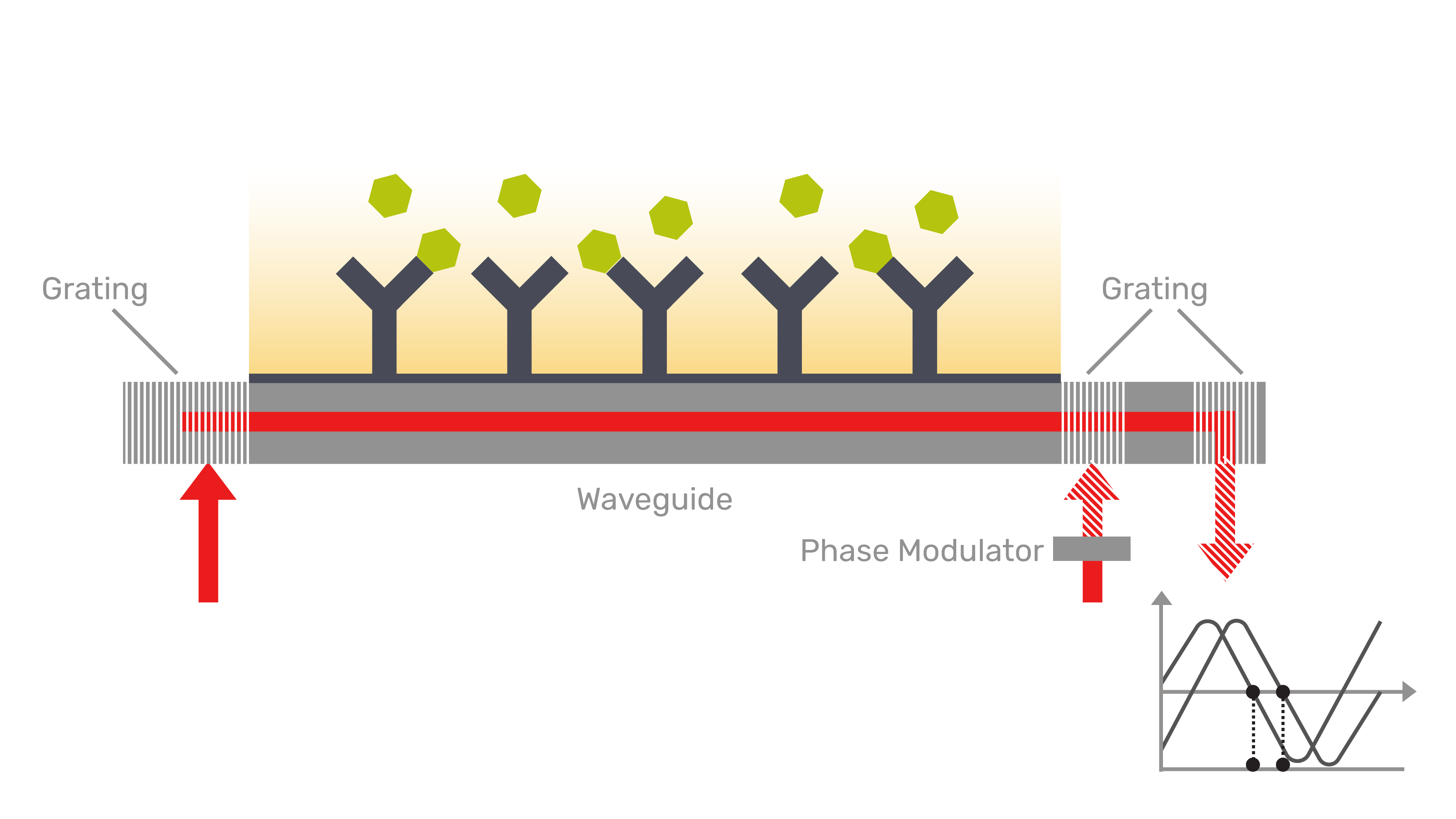Grating-coupled Interferometry on:
[Wikipedia]
[Google]
[Amazon]
Grating-coupled interferometry (GCI) is a
 GCI is based on phase-shifting waveguide
GCI is based on phase-shifting waveguide
biophysical
Biophysics is an interdisciplinary science that applies approaches and methods traditionally used in physics to study biological phenomena. Biophysics covers all scales of biological organization, from molecular to organismic and populations. B ...
characterization method mainly used in biochemistry
Biochemistry, or biological chemistry, is the study of chemical processes within and relating to living organisms. A sub-discipline of both chemistry and biology, biochemistry may be divided into three fields: structural biology, enzymology, a ...
and drug discovery
In the fields of medicine, biotechnology, and pharmacology, drug discovery is the process by which new candidate medications are discovered.
Historically, drugs were discovered by identifying the active ingredient from traditional remedies or ...
for label-free analysis of molecular interactions. Similar to other optical methods such as surface plasmon resonance
Surface plasmon resonance (SPR) is a phenomenon that occurs where electrons in a thin metal sheet become excited by light that is directed to the sheet with a particular angle of incidence (optics), angle of incidence, and then travel parallel to ...
(SPR) or bio-layer interferometry (BLI), it is based on measuring refractive index
In optics, the refractive index (or refraction index) of an optical medium is the ratio of the apparent speed of light in the air or vacuum to the speed in the medium. The refractive index determines how much the path of light is bent, or refrac ...
changes within an evanescent field
In electromagnetics, an evanescent field, or evanescent wave, is an oscillating electric and/or magnetic field that does not propagate as an electromagnetic wave but whose energy is spatially concentrated in the vicinity of the source (oscillat ...
near a sensor surface. After immobilizing a target to the sensor surface, analyte molecules in solution which bind to that target cause a small increase in local refractive index. By monitoring these refractive changes over time characteristics such as kinetic rates and affinity constants of the analyte-target binding, or analyte concentrations, can be determined.
Explanation
 GCI is based on phase-shifting waveguide
GCI is based on phase-shifting waveguide interferometry
Interferometry is a technique which uses the ''interference (wave propagation), interference'' of Superposition principle, superimposed waves to extract information. Interferometry typically uses electromagnetic waves and is an important inves ...
. Light of the sensing arm of the interferometer is coupled into a monomode waveguide through a first grating, and undergoes a phase change until it reaches a second grating, depending on the local refractive index within the evanescent field (see image). The second grating is used for coupling in light of the reference arm of the interferometer, and interference created by the superposition of the sensing and reference waves after the second grating translates the phase changes into an intensity modulation. By rapid phase modulation of one of the arms using a liquid crystal element, and thanks to the long interaction length with the sample, extremely high sensitivities with respect to surface refractive index can be achieved even at acquisition rates above 10 Hz. Since the interference is created on chip and not through free-space propagation, a high robustness with respect to ambient disturbances such as vibrations or temperature changes is achieved.
References
See also
*Receptor–ligand kinetics
In biochemistry, receptor–ligand kinetics is a branch of chemical kinetics in which the kinetic species are defined by different non-covalent bindings and/or conformations of the molecules involved, which are denoted as '' receptor(s)'' and '' li ...
* Affinity
Affinity may refer to:
Commerce, finance and law
* Affinity (law), kinship by marriage
* Affinity analysis, a market research and business management technique
* Affinity Credit Union, a Saskatchewan-based credit union
* Affinity Equity Pa ...
* Ligand binding assay A ligand binding assay (LBA) is an assay, or an analytic procedure, which relies on the binding of ligand molecules to receptors, antibodies or other macromolecules. A detection method is used to determine the presence and amount of the ligand-rece ...
* Immunoassay
An immunoassay (IA) is a biochemical test that measures the presence or concentration of a macromolecule or a small molecule in a solution through the use of an antibody (usually) or an antigen (sometimes). The molecule detected by the immunoassay ...
* Label-free quantification
Label-free quantification is a method in mass spectrometry that aims to determine the relative amount of proteins in two or more biological samples. Unlike other methods for protein quantification, label-free quantification does not use a stable i ...
Electromagnetism
Nanotechnology
Spectroscopy
Biochemistry methods
Biophysics
Forensic techniques
Protein–protein interaction assays
Plasmonics
Optical phenomena
{{biophysics-stub